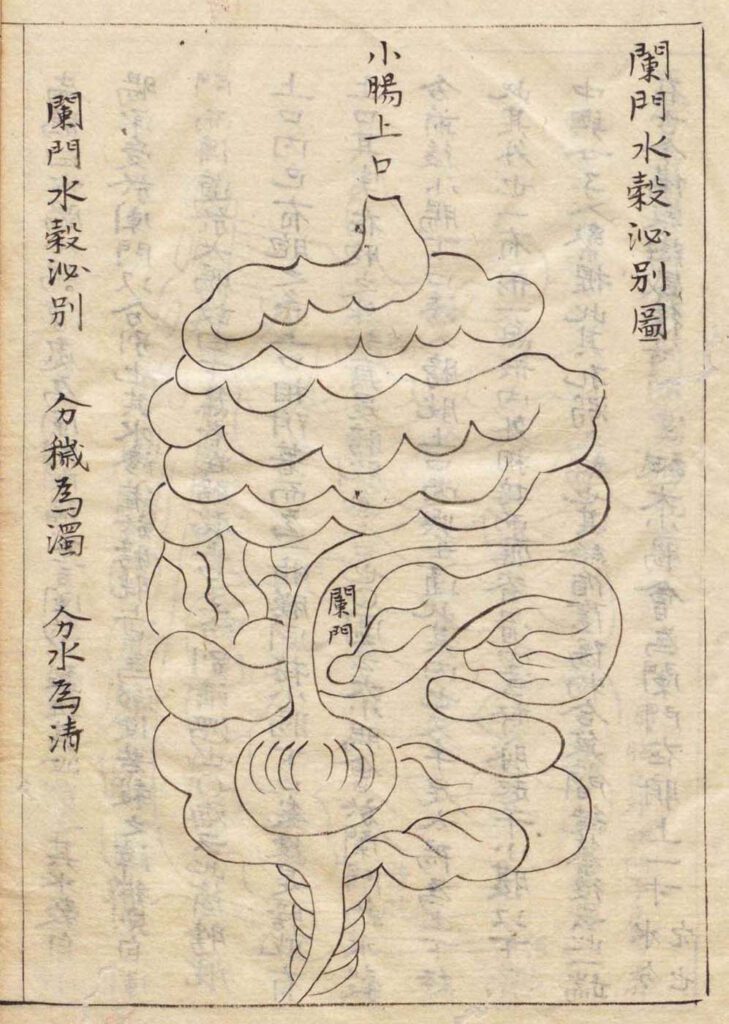

No title. The Screen gate. Kajiwara Shōzen 梶原性全 (1265–1337) Man’anpo 万安方, 1315–27, scroll 54. Edo 江戸 period (1603–1868) manuscript. National Archives of Japan.
‘Illustration of the Screen gate that separates water and grains’, Lanmen shuigu mibie tu 闌門水穀泌別圖. Wang Haogu 王好古 (1200–64?) The Great Teaching of Yi Yin’s Decoction Classic Propagated by [Zhang] Zhongjing, Yi Yin tangye Zhongjing guang wei dafa 伊尹湯液仲景廣爲大法, 1234. Japan, Edo 江戸 period (1603–1868) manuscript. National Archives of Japan.
Cross-reference: Frontal illustration of the small and large intestines
This image offers a close-up view of the intestinal tract, beginning from the ‘upper mouth of the small intestine’ down to the rectum. It also depicts the urinary bladder and the urethra. The textual inscriptions indicate the location of the third gate that features in the digestive process, the ‘Screen gate’ (lan men 闌門). This is the gate that connects the small intestine with the large intestine. It is the site where the remainder of the digested food is separated into ‘turbid dirt’ and ‘clear water’. Turbid dirt travels from the small intestine to the large intestine and onward to the rectum, from where it is eventually voided as faeces. Clear water flows downwards into the upper mouth of the ‘urinary bladder’ (pang guang 膀胱), from where it is voided as urine. The text that accompanies this image in the Guang Wei Dafa describes the anatomical structure of the urinary bladder in great detail: it is composed of an outer membrane that envelops an ‘inner pouch’ (bao 胞). It also weighs in on a controversy about the physiology of urination: Since the urinary bladder functions as a membrane that envelops the pouch, how could one say that it has an upper mouth?